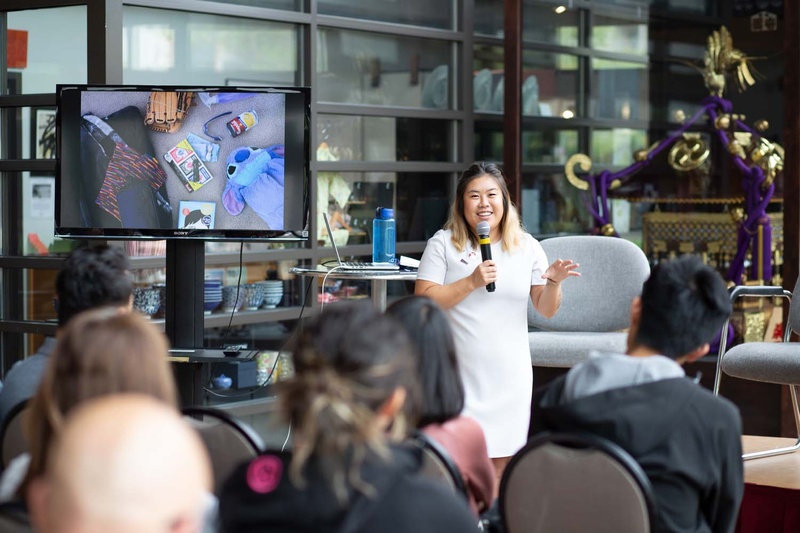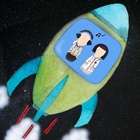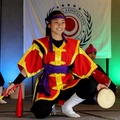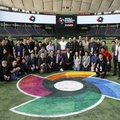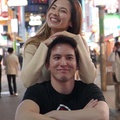Kayla Isomura may be best known for their work on The Suitcase Project (2018), a multimedia exhibition which explored themes of home, sudden dislocation, and discrimination experienced by fourth- and fifth-generation Japanese Canadians and Americans. As a fourth-generation Japanese and Chinese Canadian storyteller, artist, documentary photographer, and journalist, Isomura (them/they) has delved into creative projects and community work to explore Nikkei culture and identity.
The Suitcase Project
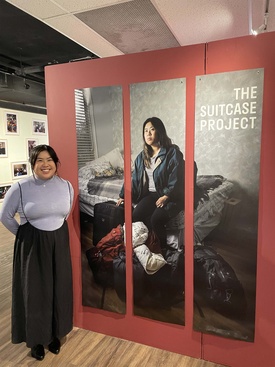
To create this project, Isomura asked fourth- and fifth-generation Japanese Canadians and Japanese Americans what they would pack if they were uprooted from their homes at a moment’s notice. Isomura then photographed participants and their chosen items in their homes and conducted interviews about those items. Through photographs, short films, and interviews, this work explores how these participants remain affected by the history of internment and other forms of discrimination.
The Suitcase Project was exhibited in 2018 at the Nikkei National Museum & Cultural Centre in Burnaby BC and has continued as a traveling exhibit. It will be at the Sidney Museum, Sidney, British Columbia, until July 4, 2022.
“The Suitcase Project led me to many connections within the Japanese American community, most notably, with Densho and Minidoka Pilgrimage,” said Isomura. Through these Seattle-based organizations, Isomura has done a considerable amount of work with the Japanese American community there and now considers Seattle to be their second home. (Densho strives to preserve and share history of the World War II incarceration of Japanese Americans and to promote equity and justice today. Minidoka Pilgrimage organizes annual visits to the site in Idaho for family, friends, and allies of those who were incarcerated.)

Family Roots
“I am of mixed Japanese and Chinese descent,” said Isomura. “My dad is a third-generation Japanese Canadian who grew up in eastern Canada, while my mom is a third-generation Chinese Canadian who grew up in Vancouver, B.C. I was born and raised in a suburb of Vancouver and identify as a multiracial, multigenerational settler. I identify as fourth-generation on both sides of my family.”
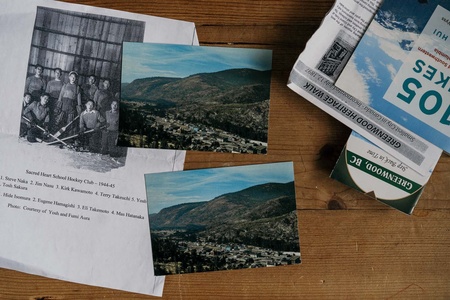
What does Nikkei mean to you? Do you identify as Nikkei?
Isomura defines Nikkei as of Japanese descent, inclusive of anyone within the diaspora, regardless of citizenship or nationality. “Language and terminology are nuanced, and I recognize the weight that the term Nikkei has for some people. I am not sure if there is a perfect word or term to encompass all of those within the Japanese diaspora but I use Nikkei in spaces where that word seems appropriate.”
How do you or have you participated in your Nikkei community(ies)?
“I was introduced to the Japanese Canadian community in 2014 through the Japanese Canadian Young Leaders Conference (JYCYLC) in Vancouver, B.C. It was the first time I met Nikkei outside of my family and I still recall how jarring it felt to meet others who also identified as multigenerational, with many holding Japanese names. I experienced many firsts that weekend, from tours of the historic Powell Street area and Steveston Village to eating bento boxes with pickled vegetables and manju (traditional Japanese confection). I was 20 years old at the time and my older sister had signed us up to participate. Unaware of what I was walking into, I left with a newfound sense of community and a longing to continue what my newly found relationships and knowledge had sparked.”
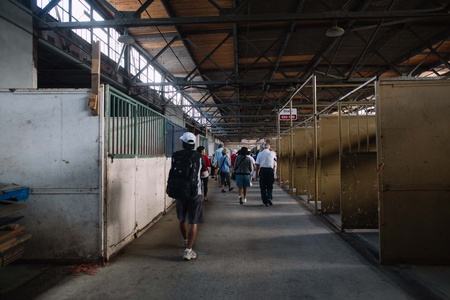
After this conference, Isomura and others in Vancouver continued to meet, eventually forming what is now known as the Kikiai Collaborative. (Kikiai means “listening to each other” in Japanese.) “Over the years, we built an informal space focused on building intergenerational, cross-cultural, and multigenerational relationships. In 2019, a handful of us organized ensoku,a multi-day gathering for young-ish people of Japanese descent,” said Isomura. (Ensoku means “excursion” or “trip” in Japanese.)
Their ensoku gathering consists of four key components:
- Eat. Participate in a gyoza-making workshop and enjoy dinner at a local restaurant.
- Share. Meet new people and discuss issues such as mixed-, multi-racial, and/or queer identities, culture, and community.
- Learn. Revisit history on a cultural tour of Vancouver’s Downtown Eastside neighborhood.
- Make. Create art with interdisciplinary artists from their community.
The ensoku group is fairly informal and events are not held on a regular basis. After the 2019 ensoku event, they organized a discussion on food that was held online due to the pandemic.
Isomura has continued to attend conferences in cities across Canada, organized by the aforementioned Young Leaders Committee. They believe that both Kikiai and the conferences were essential for strengthening their identity and relationships within the Nikkei community.
“Being based in Vancouver, Kikiai was grounding, allowing me to (physically) meet and build relationships with people who shared (and continue to share) similar interests and ideas. Further, I was introduced to other local organizations, events, and initiatives. Through the conferences, I’ve made friends with people across the country.”
Isomura added that they have worked with several other Nikkei local and national organizations in Canada, including Powell Street Festival, Kugi Collective, WePress Community Arts Space, and the Nikkei National Museum & Cultural Centre.
Yume. Digital Dreams
Isomura’s latest project, Yume. Digital Dreams, was an artist collaboration project involving 14 Japanese Canadian artists working in pairs, produced by Julie Tamiko Manning and Matt Miwa.
“The goal of the project was to pair artists from different backgrounds,” explained Isomura. “There were 14 of us from across Canada, so seven pairs in total. We were a group of dancers, musicians, actors, painters, and more. Participating in Yume. Digital Dreams was quite interesting for me because it was based on creativity and collaboration. We weren’t expected to create a product in its final form, although we provided regular updates on social media and showcased our work during an online event in May.”

Isomura worked with Dawn Obokata, a theater artist based in Toronto, Ontario. During their collaboration, the idea of home came up in many forms, exploring questions such as what is home, what does it mean to leave home, what happens when home as we knew it changes?
“The project Dawn and I put together was a digital collage with video, audio, photos, and text. Titled Uchi(Home), we focused on the theme of home, which came from several conversations we had during our time working together. Our biggest challenge was probably learning how to combine our artistic practices from a distance. It was a persistent, ongoing question but one we addressed over Zoom chats during which we learned about our musical hobbies, family musings, and past artistic undertakings. Uchi (Home) became a blur of fiction and reality with eerie undertones. However, what truly came out of Yume and Uchi was the creative relationship that Dawn and I developed. If not for this project, I am not sure when or if our paths would have crossed, as our disciplines, communities, and geographical spaces are so varied.”
Isomura and Obokota’s completed work, along with the work of other Yume artists may be viewed on a video entitled Vernissage 2022 on the Yume website.
Identity and Belonging
“As somebody who didn’t grow up with a sense of Nikkei culture or heritage, I recognize the privilege I have in the countless connections and opportunities I have today,” explained Isomura. “Having spent many years navigating my identity as a fourth-generation Japanese Canadian and learning the history that my family faced during the Second World War, I recognize the need for inclusive and accessible space within the community.”
Isomura elaborated further, “Identity and belonging are complex and can be so much more than simply being Nikkei. Often, this means considering the intersections of our identities. While Nikkei can be one marker of connection, many of us carry multiple identities. It’s important to consider this and make space for multiracial, disabled, queer and/or trans folks in our community, for example. It’s also important to consider relationship building, as I feel that many of us grew up without access to our history, culture, and community. This means making space for people to get to know each other and have conversations about where they’re coming from, while also acknowledging what privileges they may carry in that space.”
© 2022 Karen Kawaguchi


